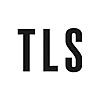The book trade magazine the Bookseller last week revealed its shortlist for a literary prize that matters: the Diagram prize for oddest book title of the year.
Will the winner of this coveted award be How To Dungeon Master Parenting by Shelly Mazzanoble or Killing the Buddha on the Appalachian Trail by John Turner? Could Judith Houck steal it with Looking through the Speculum: Examining the women’s health movement – or has Richard Adams Carey done enough with The Philosopher Fish: Sturgeon, caviar, and the geography of desire? We hazard a guess that the essay collection Hell-Bent for Leather: Sex and sexuality in the weird western has a chance. We only question whether Boston’s Oldest Buildings and Where To Find Them by Joseph M. Bagley should be in contention at all. It is, after all, the updated edition of a book first published a few years ago.
The Diagram prize is decided by a public vote on the Bookseller’s website, and closes on December 2. The winner will be unveiled a few days later. For now only one thing is certain: that the winner will be a book published by a university press. The Bookseller says this is the first time that the whole shortlist has been supplied by academic publishers, although they have always maintained a presence; the first winner, back in 1978, was Proceedings of the Second International Workshop on Nude Mice (University of Tokyo Press). Recent champions include A Dog Pissing at the Edge of a Path: Animal metaphors in an Eastern Indonesian society by Gregory Forth (McGill-Queen’s University Press) and Danger Sound Klaxon!: The horn that changed history by Matthew F. Jordan (University of Virginia Press), which won last year.
This year’s list also happens to be, like last year’s, all-American. Rival nations urgently need to buck up their ideas.
Calling all cryophiles: this is your time. Or it should be. The closing phases of the year, in our neck of the woods, are still envisaged as the time of driffles and doggindales. (In non-cryophile, that’s slight, stormy showers of rain or snow and patches of mist that cling to sheltered hillsides.) By this time next month, you might like to think, you’ll be degombling (knocking the snow from your shoes at the end of a wintry walk), and shunning the seasonally affected who suffer from the mubble-fubbles (low spirits). We had thought that bickering was a verbal matter, but no: the fisticuffs that the word would have denoted to a medieval cryophile had evolved by the nineteenth century into the pelting of a friend with snowballs.
Our newfound knowledge on these cold corners of the lexicon derives, we confess, entirely from A Winter Dictionary (Elliott and Thompson, £16.99), Paul Anthony Jones’s “collection of words for the festive season”, published last month. There are worse books for the Christmas market; divided into sections on subjects such as the changing seasons and the party season, this one could at least prompt some pleasant pokertalk (casual fireside chatter) amid the apolauticism (total devotion to pleasure and enjoyment). As long as it isn’t presented as a Yorkshire compliment (a gift thoughtlessly given and received unwillingly).
Some readers will remember that we have sometimes written about “Advertising Authors” – meaning the deployment of authors’ names or images in advertisements of the past. Well before “The Yellow Wallpaper” and Herland, Charlotte Perkins Gilman exhibited a serious artistic talent in the commercial line. From the biography of the feminist author by Cynthia Davis, we learn that in the early 1880s Gilman (then simply Charlotte Perkins) illustrated a series of trade cards to designs by a “kissing cousin” of hers. These promotional ephemera suggest that “Soapine”, a brand of “French laundry soap”, was to be associated with a whale being scrubbed by two sailors, or a boy climbing a rope to the stars. A conventionally fair toxophilite, as reproduced above, also seems to hit the mark.
Delivering some much-needed good news from Washington DC, Capitol Hill Books features a collection of seventeen of Gilman’s cards, priced at $1,250, in its delectable new catalogue – a sophomore effort and an eclectic delight. As well as an illustrated manuscript of “Descriptive Geometry” from 1875 ($1,500), here is Witt, a poetry collection by Patti Smith, inscribed for her fellow musician and sometime lover Tom Verlaine, whom Smith has also caricatured ($7,500). This is a catalogue that runs to several Jesuit sermons as well as “five unused decals” for 1960s condom machines ($350). “She will be happy you tried it”, one of these items promises.
On the page before Gilman (and the warning that one of her cards “employs racist imagery”) is the City Lights edition of The Hearing Trumpet by Leonora Carrington ($750), inscribed by the author. Among other faint markings in pencil, it contains towards the rear “one of the briefest of indices we have ever encountered”: “Carrots 138, 143”. This is indeed “fine, interesting, and unique material” – inspiration, perhaps, for would-be winners of a certain prize for the oddest book title.
Correspondence. Trevor Pateman was sorry to learn of the statue of Sylvia Townsend Warner we mentioned last week. From Brighton Mr Pateman writes: “Warner’s books are readily available in print (I read that much credit is due to Professor Peter Swaab); they are enjoyed, discussed, and written about”. Is a “polite effigy” of her on a park bench in Dorchester required? “If this unimaginative private project is completed, it will diminish her life and work.” We do not know how a polite effigy could accomplish such a feat; but we do know that the campaign to raise the necessary funds for a Warner statue is now more than a fifth of the way towards its target.
An objection on a different artistic subject comes from Sir Jonathan Bate, who writes from Arizona State University concerning the portrait of Shakespeare that has been removed from 10 Downing Street (November 1). Roubiliac’s copy of the “masterly Chandos original is indeed somewhat rubicund”, but it is also
of genuine interest as the model Roubiliac used in creating the marble sculpture commissioned by David Garrick for his riverside temple dedicated to the god of his idolatry – an object of great importance in the eighteenth-century elevation of Shakespeare to the status of national poet.
Could it be that Shakespeare’s expulsion from Downing Street reflects a desire to “to bury the legacy of the bardolatrous Johnson (the blond one, that is to say, not Garrick’s friend Samuel)”? Sir Keir Starmer’s inglorious predecessor as prime minister was due to write a biography of Shakespeare, you will recall – and may yet, we fear, do so. “A rehang in the Cabinet room might have been more appropriate, given Shakespeare’s historic role as an exemplar and engine of those estimable ambitions of the new government, social mobility and economic growth.”
The post Cryophiled appeared first on TLS.

 By Times Literary Supplement | Created at 2024-11-14 02:17:53 | Updated at 2024-11-21 15:23:53
1 week ago
By Times Literary Supplement | Created at 2024-11-14 02:17:53 | Updated at 2024-11-21 15:23:53
1 week ago








